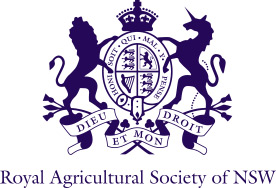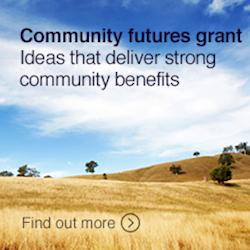Unlock the Secrets Heritage Pavilion: 1920 - The Comeback Show
Posted on : 30 March 2021
After the cancelation of 1919 Show due to the Spanish flu epidemic, the Royal Agricultural Society faced many challenges.
Everyone is used to seeing aerial photographs, and now with drones being so affordable, even getting a DIY shot of your own backyard is easy. But in 1920 a bird's-eye view was remarkable - that's when the very first aerial photograph of the Showground was produced. Amongst some of the first photos in Australia to be taken from a plane, it depicts the Show in full-swing, with thousands of people dotting the streets and the Grand Parade underway in the arena. This was the comeback Show, a life-affirming affair after the 1919 shutdown caused by the Spanish flu.
The pandemic had taken 6,000 lives in New South Wales alone, and on top of that, the country had just emerged from a long war; drought ravaged the regions. Then, as now, people were desperate for a new beginning. Then, as now, the RAS was determined to help provide one.
The Society faced plenty of challenges. Getting the ground ready in time for re-opening was a scramble. It had been an arm-wrestle to get the Showground back from health authorities, who set up a temporary overflow hospital in the grounds during the crisis, but showed no sign of shifting out when it passed.
But that wasn’t the biggest issue.
The cancellation of the 1919 Show cost a bomb, especially as it had been styled as an extravagant jubilee to mark 50 years of the Society's incorporation, and 50 years at its Moore Park location. More revenue was urgently needed to service an overdraft, and to meet the rapidly growing costs of administration, ground improvement and maintenance. After looking closely at operations, the Council decided to raise the price of admission to the Show - a fair enough call, considering it hadn’t gone up for 60 years! Mindful of families, entry for children remained the same, but under a split-pricing policy adult tickets cost two shillings for the first five days of the nine-day Show, one shilling for the remaining days, and one shilling for night-time admission. This meant people could still afford to make several visits if so inclined.
The plan was a success.
On Good Friday, a record crowd of 110,000 turned-up. RAS president Samuel Hordern was moved, saying the support of the people would do much to recompense the Society for its losses. Everyone, he said, seemed to feel impelled to visit their great exhibition.
Newspapers noted that holiday-makers could not resist the beckoning of the cloudless blue sky. 'Fathers and mothers,' one paper noted, 'were intent on giving their children an outing in this great common playground of city and country. They tried their best, despite the over-crowding, to make a picnic of it. These little family groups were scattered all over the grounds, eating their sandwiches wherever there was a little shade from the blazing sun. It was a great meeting-place for country cousins, and all appeared to have a jolly time viewing the maze of exhibits and hunting for samples.'
At the official opening it was reported that the grandstand and lawn were packed with gaily-dressed women, and amongst the ubiquitous black umbrellas, coloured sunshades showed up as vivid spots in the moving panorama. The absence of khaki uniforms in the crowd was a loss no one minded.
Producers also had reason to be cheery. After the terrible season, no one could believe the quality of the exhibits. Rains at just the right time, in just enough districts saved the day. And in the halls and stands, manufacturing, retail and industrial displays were bigger than ever.
The Show, everyone felt, had not suffered for its 1919 recess. Rather, it seemed reinvigorated. In all, the Royal Agricultural Society of New South Wales was commended for 'carrying on’ with such fine spirit and enterprise. There were no guarantees. Putting on the 1920 Show had required a leap of faith, a rallying of energy and courage. The community had been warned that milder attacks of the flu might recur for several years.
'That we have been spared the dread visitation so far this year,' said The Sydney Morning Herald, 'is a matter for devout national thankfulness rather than for boasting. It is gratifying to remember that, whereas at Show time last year the conditions of life in the city were dismal in the extreme, this year they are bright and cheerful, for the physical health of the community is very good.'
What a shame the photographer could not hear the carnival burble of the Showground over the engine noise as he leant out of his aircraft to take that first aerial photo. Where illness and death had been, life had returned.





